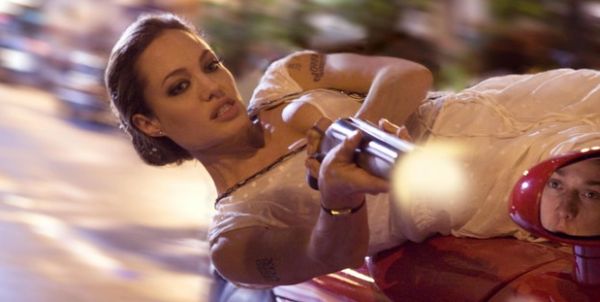How to Analyse Movies #7: Iconography & Realisticness

Manon de Reeper is the founder and CEO of Film…
In previous chapters, we’ve discussed film language, signs, codes and conventions, mise-en-scène and editing, the camera, lighting, sound and score, and finally, story and genre.
In this final chapter, we’ll discuss iconography and realisticness. I’m using the term realisticness over “realism” here, even if that would be grammatically correct, but I don’t want to confuse you. Discussing realism would open a can of film theory worms, and is very different to what I want to discuss here, which is simply how realistic a film is.
[membership level=”0″]Sorry! This article is part of our Premium Content. Please subscribe to unlock our fantastic HOW TO ANALYSE MOVIES series, and thousands of other terrific articles! Go here to become a member. It’s just $25 per year.
OR, buy Film Analysis For Beginners: How To Analyse Movies on Amazon for $4.99.
Film Analysis For Beginners: How To Analyse Movies
[/membership][membership level=”3,5,6″]
Iconography, in essence, is an aspect of genre and mise-en-scène. When we watch a movie in a certain genre, we expect to see certain elements: the icons. For instance, when we watch a Western, we expect tumbleweeds, desert, horses, saloon bars, et cetera. When we watch a superhero movie, we expect super powers, muscular and slick superheroes, a female romantic interest, lots of CGI, et cetera. These are the genre indicators, the iconography.
Think of other genres and list some of their iconography, too!
The Stars as Part of Iconography
There are some stars that are typecast in certain roles. For instance, you would never expect Arnold Schwarzenegger to appear in a romance, he’s the quintessential action movie star. Admittedly, he’s played in a few comedies, but that’s about how far he’s strayed from the action genre.

Stars can be signifiers of meaning as much as other symbols and codes, as they manage the audience’s expectations regarding the genre and the character they’re playing. Moreover, they can be quite powerful representations of masculinity and femininity.
In movie history, stars were actually contracted to bind them to one studio and genre, though that’s no longer the case today. This is why you saw actors playing role after similar role in the past, whereas today, stars can appear in films in multiple genres, given that they’re skilled enough to do it.
Realisticness
Films can seem very realistic – note, however, that it’s always a seeming realisticness. What movies show is never real. However, the level of realisticness is convincing and compelling enough for us to subliminally believe what we see is real.
Such high levels of realisticness are achieved by placing yourself in front of a bright screen in a dark room, so that you’re sucked in. Surround sound increases the feeling you’re right in the middle of what’s happening on-screen, and the increasingly real-looking CGI can be make anything look real, nowadays. Together, these technologies give an appearance of reality, also called verisimilitude: a convention (our assumption that what we see is real) as there is nothing ever truly real about film images.
There are two kinds of verisimilitude:
- Generic verisimilitude: convincing in its seeming realisticness due to the genre of the movie. For instance, in a zombie horror, it’s realistic for a zombie to chew on someone’s guts or rip someone’s arteries out with their teeth (which are also conventions – we expect zombies to do that). Or, in an action film like Wanted, it’s seemingly realistic that Angelina Jolie is lying on the hood of a driving car and actually hits their chaser without falling;
- Cultural verisimilitude: convincing in its seeming realisticness because it actually tries to mimic life – often the case for movies in the drama genre. Or for any other film in which real life elements are simulated, and I’ll take Wanted as an example again, where James McAvoy mimics an American accent to make it seem like he’s an American, whereas in reality he’s Scottish.

If you want to analyse a film, it’s important you realise nothing of what you see is real. You need to be aware of this fact so you can see all elements of the film for what they are.
You’ll have to break through conventions and expectations. It’s hard, but you have to consider every little sign on its own (or as a combination of signs; codes). Consider their cultural relevance and try to see what creates realisticness for the audience.
Can you think of any movies that seemed very realistic to you, even though you knew there was nothing remotely real to it? How did the filmmakers achieve it?
[/membership]
Next in How To Analyse Movies:
You’re currently on part 7: Iconography & Realism
Part 1: Introduction
Part 2: Signs, Codes & Conventions
Part 3: Mise-en-Scene & Editing
Part 4: Considering the Camera
Part 5: Lighting, Sound & Score
Part 6: Story & Genre
Part 8: Putting it into Practice
Does content like this matter to you?
Become a Member and support film journalism. Unlock access to all of Film Inquiry`s great articles. Join a community of like-minded readers who are passionate about cinema - get access to our private members Network, give back to independent filmmakers, and more.
Manon de Reeper is the founder and CEO of Film Inquiry, and a screenwriter/producer. Her directorial debut, a horror short film, is forthcoming in 2021.













